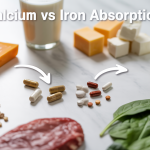Core exercises go way beyond basic crunches and sit-ups. Your core includes muscles in your back, pelvis, and abdomen that work together to support your spine and help with everyday movements like lifting groceries or getting out of bed. This guide is perfect for beginners just starting out, intermediate exercisers ready to level up, and advanced fitness enthusiasts looking for a serious challenge.
We’ll break down the anatomy of your core muscles so you understand what you’re actually working when you exercise. You’ll discover proper form and safety guidelines that prevent injury while maximizing results. Plus, we’ll walk through beginner-friendly moves like bridges and bird dogs, intermediate exercises including planks and warrior crunches, and advanced challenges like Turkish get-ups that will push your limits.
Understanding Your Core Muscles Beyond Just Abs
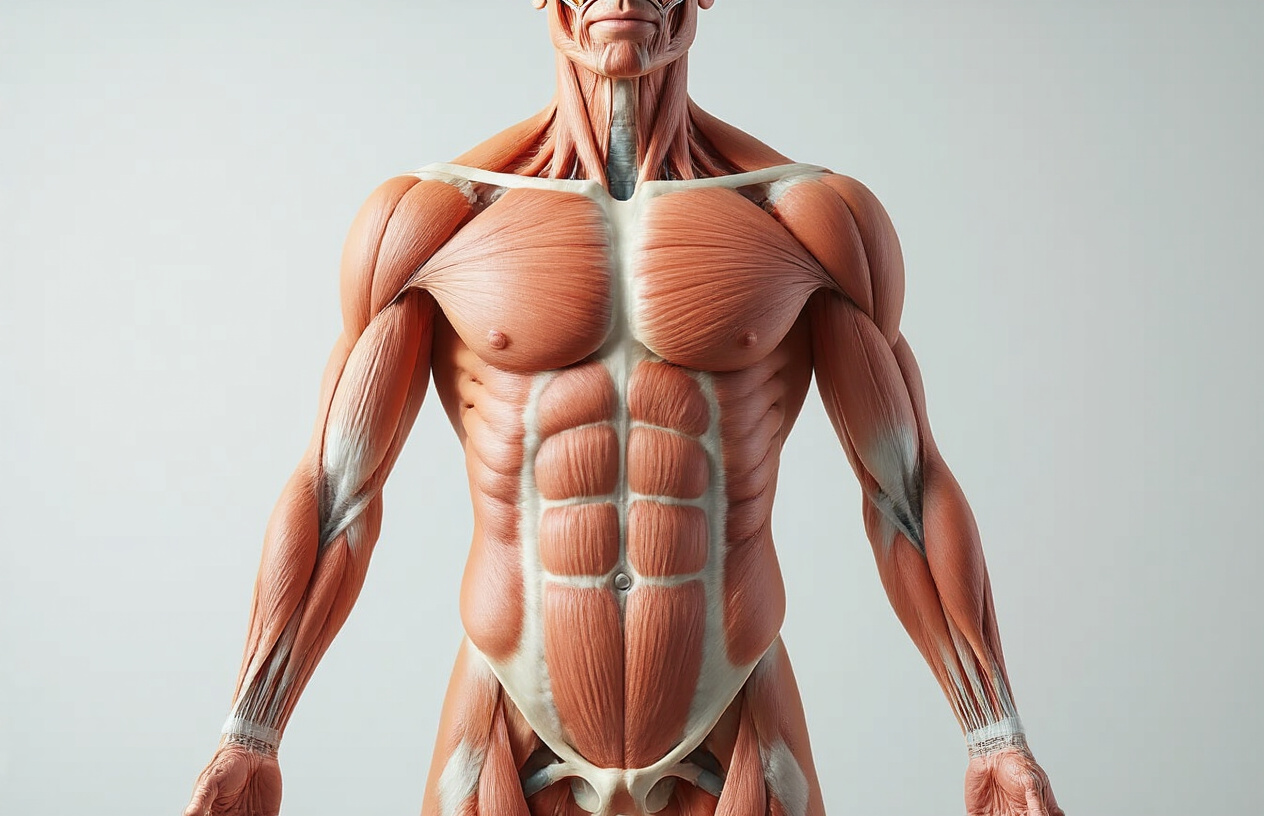
Key muscle groups that make up your complete core system
Your core consists of muscles in your back and around your pelvis, not just your abdominal muscles. This comprehensive system includes several key muscle groups that work together to provide stability and strength throughout your torso.
The primary core muscle groups include:
- Erector spinae: These muscles run along your spine and help maintain proper spinal alignment
- Rectus abdominis: The well-known “six-pack” muscles that flex your trunk
- Obliques: Located on the sides of your torso, these muscles enable rotation and lateral flexion
- Transverse abdominis: The deepest abdominal muscle that acts like a natural corset
- Multifidus: Small muscles along your spine that provide segmental stability
Beyond these primary muscles, other important contributors to your core system include the pelvic floor, diaphragm, glutes, hamstrings, hip flexors, and hip adductors. These supporting muscles work in coordination with the main core muscles to create a stable foundation for movement.
How core muscles support daily activities and overall stability
Core muscles support daily activities such as pushing a grocery cart or putting on shoes. These seemingly simple tasks require coordinated effort from your entire core system to maintain balance and generate the necessary force for movement.
A strong core helps stabilize your body and support your spine during everyday movements. Whether you’re reaching overhead, bending down to pick up objects, or simply walking, your core muscles are constantly engaged to maintain proper alignment and transfer forces efficiently throughout your body. This stabilization is crucial for preventing injury and ensuring smooth, controlled movement patterns in all activities.
Why strengthening all core muscles improves posture and balance
Strengthening core muscles improves mobility, spinal and trunk stability, balance, and posture. When all components of your core system work together effectively, they create a solid foundation that supports your entire body structure.
Proper core strength enhances overall fitness by improving the efficiency of movement patterns and reducing the risk of compensatory movements that can lead to injury. The coordinated action of all core muscles ensures that your spine maintains its natural curves while providing the stability needed for both static positions and dynamic movements. This comprehensive approach to core strengthening creates lasting improvements in how you move and feel throughout your daily activities.
Essential Beginner Core Exercises for Foundation Building
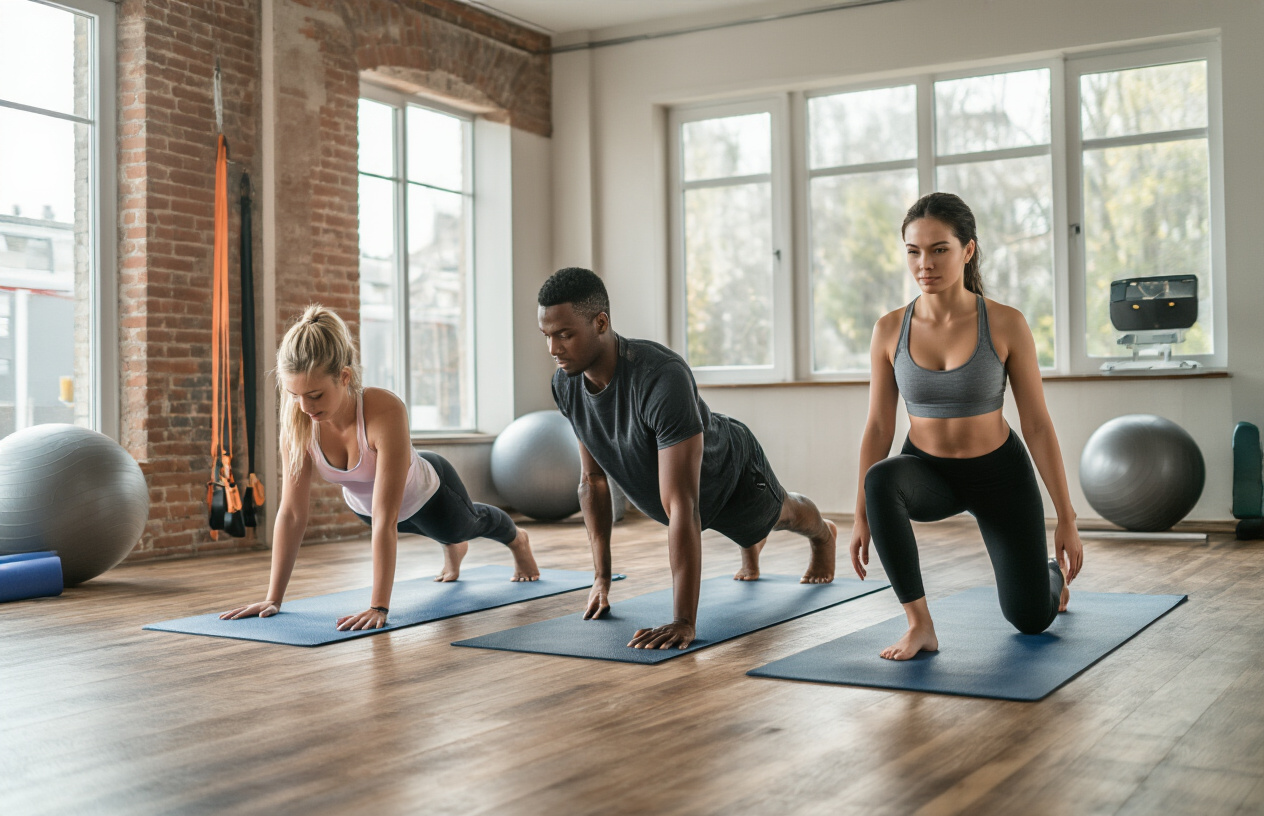
Bridge Exercise for Activating Glutes and Core Stability
The bridge exercise serves as an excellent foundation movement that activates your glutes while simultaneously training your core muscles. This dual-purpose exercise effectively tones the butt and thighs while building essential core stability. To perform this exercise correctly, lie on your back with your knees bent and feet positioned hip-width apart. Focus on tightening your core and glutes as you raise your hips upward until your knees align perfectly with your shoulders. Hold this position for 10-30 seconds, maintaining proper alignment throughout the movement. Repeat this sequence 3-5 times, allowing brief rest periods between holds.
Basic Crunches for Targeting Abdominal Muscles Safely
As a classic core-strengthening movement, basic crunches work your abdominal muscles through controlled lifting of the upper body. This fundamental exercise provides an accessible entry point for beginners looking to develop core strength. Begin by lying on your back with knees bent and feet hip-width apart. Cross your arms over your chest to maintain proper form and avoid neck strain. Tighten your core muscles and lift your upper back off the floor while keeping your lower back, pelvis, and feet firmly planted on the ground. This controlled movement ensures you’re targeting the right muscles without compromising your spine’s alignment. Start with 1 set of 8-12 repetitions, focusing on quality over quantity.
Supine Toe Taps as a Spine-Friendly Alternative to Crunches
Supine toe taps represent a basic Pilates exercise that effectively engages your core muscles, hips, and legs while placing minimal pressure on the spine. This makes it an ideal alternative to traditional crunches, particularly beneficial for those experiencing back pain or seeking a gentler approach to core training. To execute this movement, lie on your back and lift your legs with knees bent to 90 degrees. Tighten your core muscles and slowly lower one foot to gently tap the floor while keeping the other leg completely still and your back flat against the surface. The key is maintaining control throughout the movement and alternating legs with precision. Begin with 1 set of 8-12 repetitions per leg.
Bird Dog for Engaging Both Abdominal and Back Muscles
The bird dog exercise stands out as a comprehensive movement that engages both your abdominal and back muscles while improving coordination, balance, and overall stability. This exercise challenges your entire core system through dynamic movement patterns. Start on all fours with your hands positioned directly under your shoulders and knees under your hips. Tighten your core muscles to establish a stable base. Simultaneously lift and straighten one leg to hip level while lifting and extending the opposite arm to shoulder level, maintaining a neutral spine throughout the movement. Pause briefly at the top position to maximize muscle engagement, then repeat with the opposite leg and arm combination. Begin with 1 set of 8-12 repetitions on each side, focusing on smooth, controlled movements rather than speed.
Intermediate Core Workouts to Build Strength
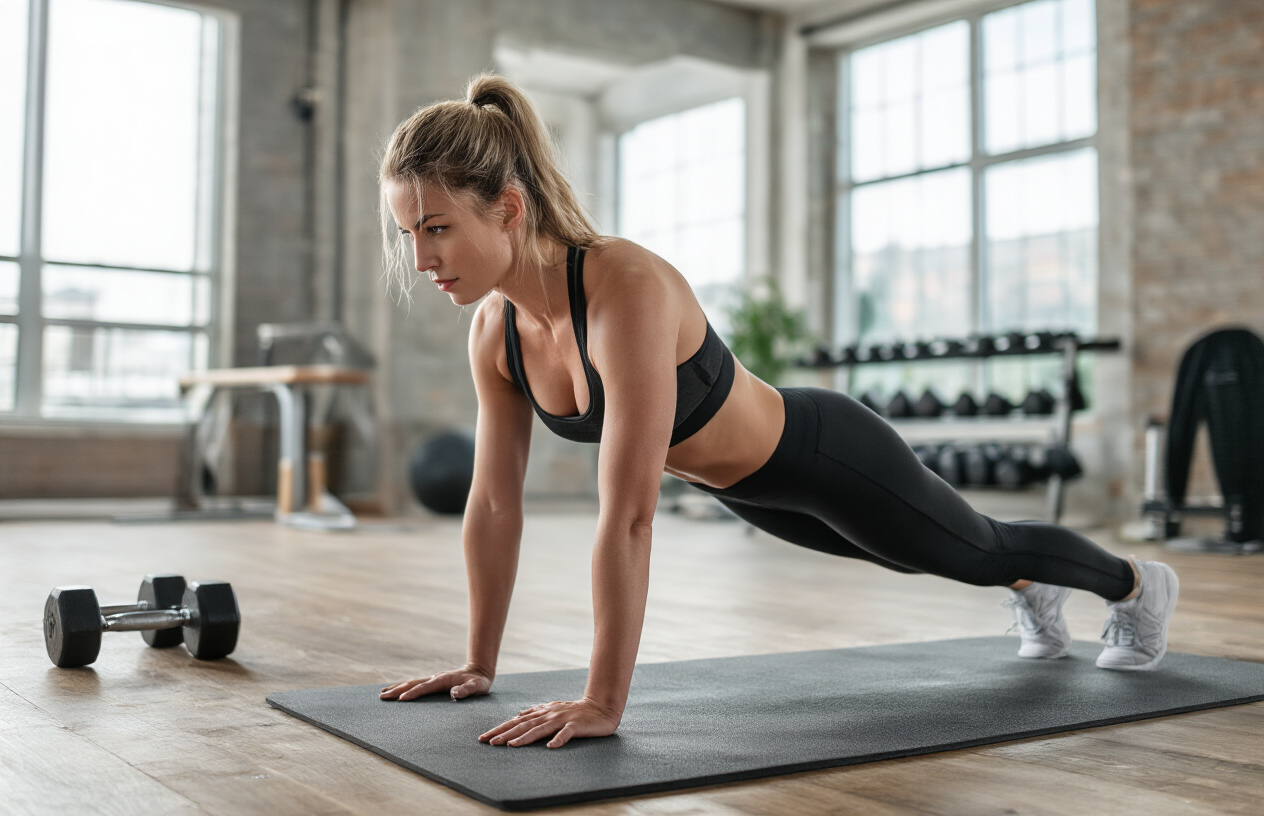
Plank hold for full-body core engagement
The plank hold represents one of the most comprehensive core exercises available, targeting not just your abdominal muscles but engaging your entire body system. This exercise simultaneously works your core, arms, shoulders, back, glutes, and legs, making it an incredibly efficient movement for building full-body stability and strength.
To perform the plank hold correctly, begin by starting on all fours in a tabletop position. Straighten your legs behind you, positioning your feet hip-width apart to create a stable base. Once in position, tighten your core muscles and maintain this rigid posture for 10-30 seconds, depending on your current strength level. For optimal results, repeat this hold 3-5 times during your workout session.
If you find the standard plank too challenging initially, modify the exercise by keeping your knees on the floor while maintaining proper upper body alignment. This modification allows you to build strength gradually while perfecting your form.
Bicycle crunches for oblique and hip muscle development
With this foundation established, bicycle crunches offer an excellent progression that specifically targets your obliques, rectus abdominis, and hip muscles. This dynamic variation of the traditional crunch incorporates rotational movement patterns that closely mimic real-world activities.
Execute bicycle crunches by lying on your back with your left knee bent toward your chest and your right leg straight, lifted slightly off the ground. Place your hands behind your neck for support, then lift your right shoulder toward your left knee in a controlled motion. As you lower back down, extend your left leg while simultaneously bending your right knee and lifting your left shoulder toward the right knee. This alternating pattern creates the characteristic “bicycling” motion.
Start with 3 sets of 12 alternating repetitions, focusing on controlled movement rather than speed to maximize muscle engagement and prevent injury.
Warrior crunch combining core work with lower body strength
Now that we’ve covered isolated core movements, the warrior crunch elevates your training by combining core strengthening with lower body muscle development. This exercise effectively targets your core while simultaneously engaging your thighs, glutes, and quadriceps, creating a compound movement that maximizes training efficiency.
Begin by standing with your feet positioned wider than shoulder-width apart, turning your toes outward for optimal stability. Place your hands behind your head and engage both your core and glute muscles. Lower your body by bending your knees until your thighs reach parallel with the floor, creating a wide squat position.
From this stable base, bend your torso to one side, bringing your elbow toward the corresponding thigh. Return to center and repeat the movement on the opposite side. This lateral flexion challenges your obliques while maintaining the lower body strength component. Start with 1 set of 8-12 repetitions per side, focusing on maintaining proper squat depth throughout the movement.
Bird dog with elbow to knee for dynamic movement patterns
Previously covered static holds and controlled movements, the bird dog with elbow to knee variation introduces dynamic movement patterns that significantly enhance core strength while improving coordination and stability. This exercise engages both your abdominal muscles and back muscles, creating balanced strength development throughout your core system.
Start in the all-fours position with your hands directly under your shoulders and knees under your hips. Simultaneously lift and straighten one leg to hip level while extending the opposite arm to shoulder level, creating a straight line from fingertips to toes. This is your starting position for the dynamic component.
From this extended position, bring the raised knee and opposite elbow toward each other in a controlled motion, engaging your deep core muscles. Return to the fully extended position to complete one repetition. This dynamic movement challenges your stability while building functional strength patterns.
Begin with 1 set of 8-12 repetitions on one side before switching to work the opposite arm and leg combination. Focus on maintaining steady breathing and controlled movements throughout the exercise to maximize effectiveness and prevent compensation patterns.
Advanced Core Exercises for Maximum Challenge

Mountain Climbers for Explosive Core and Cardio Training
Mountain climbers represent the perfect fusion of core strength and cardiovascular conditioning, making them an exceptional advanced exercise for those seeking maximum challenge. This dynamic movement combines a plank position with alternating knee movements, creating an explosive training stimulus that targets multiple muscle groups simultaneously while demanding exceptional balance and core stability.
To execute mountain climbers with proper form, begin in a standard plank position with your hands firmly planted on the ground and your body forming a straight line from head to heels. From this foundation, lift one knee toward your chest while maintaining a straight back and keeping your hips down – this positioning is crucial for maximizing core engagement. Return the lifted leg to the starting position as you simultaneously bring the opposite knee toward your chest, creating a fluid alternating pattern that mimics a climbing motion.
The beauty of mountain climbers lies in their ability to challenge your core muscles in a dynamic, multi-planar manner while simultaneously elevating your heart rate. Start conservatively with 1 set of 8-12 repetitions, focusing on maintaining impeccable form rather than speed during your initial training phases.
Side Plank with Rotation for Enhanced Shoulder and Oblique Strength
The side plank with rotation elevates the traditional plank exercise to an advanced level, specifically targeting the often-neglected oblique muscles while simultaneously strengthening the arms and shoulders. This sophisticated movement pattern challenges your core stability in multiple planes of motion, making it an invaluable addition to any advanced core training regimen.
Begin by lying on your side with your forearm positioned directly below your shoulder, legs extended and feet stacked on top of each other. Engage your core to lift your hips, creating a perfectly straight line from your head to your feet. Once you’ve established this stable side plank position, raise your top arm straight up toward the ceiling.
The rotation component begins as you rotate your torso toward the floor, threading your top arm underneath your body in a controlled manner. This rotational movement specifically targets the obliques while challenging your shoulder stability and core control. Rotate back to the starting position with the same deliberate control, ensuring smooth, controlled movement throughout the entire range of motion.
Start with 1 set of 8-12 repetitions before repeating the entire sequence on the opposite side, maintaining focus on quality over quantity.
Turkish Get-Up for Complete Spinal Stabilization and Mobility
The Turkish get-up stands as one of the most comprehensive core exercises available, offering unparalleled benefits for spinal stabilization while simultaneously improving mobility throughout the hips, lumbar spine, and thoracic spine. This full-body movement builds remarkable strength in both the abdominal muscles and shoulders while teaching your body to work as an integrated unit.
Begin this complex movement lying on your back with one leg bent and the corresponding foot flat on the floor. The same-side arm should be positioned straight up, either holding a light weight or simply making a fist. Maintain unwavering focus on your raised hand, keeping it positioned directly above your shoulder throughout the entire movement sequence.
The ascent begins by pushing through your heel and the opposite elbow to prop yourself up, then transitioning onto your hand to achieve a seated position. From here, slide your opposite leg underneath your body into a kneeling position, then rise up into a lunge stance before finally standing upright. The descent requires reversing these exact movements with the same deliberate control and precision.
Initially practice this movement without any weight to master the complex coordination required, then gradually introduce light weights as your proficiency improves. Start with 3-5 repetitions, focusing on smooth transitions and maintaining perfect alignment throughout each phase of this challenging exercise.
Proper Form and Safety Guidelines for Core Training

How to Correctly Engage and Tighten Your Core Muscles
Now that we have covered various core exercises across different fitness levels, proper muscle engagement forms the foundation of effective and safe training. The key to successful core activation lies in understanding the breathing pattern and muscle coordination involved in this process.
To correctly engage your core muscles, begin with a controlled breathing sequence. Start by taking a deep inhale, allowing your ribcage to expand naturally. As you exhale, imagine drawing your belly button toward your spine in a deliberate, controlled motion. This visualization helps create the proper inward pull that activates the deep abdominal muscles.
Once you’ve initiated this movement, maintain the engagement by holding these muscles tight for several seconds. You should feel a distinct bracing sensation throughout your midsection – this feeling of braced stomach muscles serves as your indicator that you’ve successfully achieved core engagement. This technique should be practiced and perfected before progressing to more complex movements, as it serves as the foundation for all effective core training.
Modifications for People with Back Pain or Injuries
With this proper engagement technique in mind, it’s crucial to address modifications for individuals dealing with back-related concerns. Those experiencing occasional low back pain require a more cautious approach to core training, particularly with exercises like crunches.
If you’re dealing with intermittent low back discomfort, perform crunches with deliberate slowness and significantly reduce your repetition count. This controlled approach allows your muscles to adapt gradually while minimizing stress on the spine. The emphasis should be on quality of movement rather than quantity of repetitions.
For individuals managing chronic low back pain, the approach becomes more complex and requires professional guidance. It’s essential to consult with a certified trainer or healthcare professional before attempting traditional crunches or similar spinal flexion exercises. These professionals can assess your specific condition and recommend appropriate modifications.
Supine toe taps present an excellent spine-friendly alternative to traditional crunches for those with back pain. This exercise maintains core activation while keeping the spine in a neutral position, reducing the risk of aggravating existing back issues while still providing effective muscle engagement.
Starting Repetitions and Progressions for Each Fitness Level
Previously, we’ve established the importance of proper form and safety modifications. Now, determining appropriate starting repetitions and progression strategies becomes essential for long-term success and injury prevention.
The most reliable approach to establishing your starting point involves consulting with a personal trainer who can assess your individual fitness level and specific goals. This professional evaluation ensures that your repetition and set schemes align with your current capabilities while providing appropriate challenge for continued improvement.
For those beginning their core training journey, many exercises benefit from starting with a conservative approach of 1 set containing 8-12 repetitions. This range allows for proper form development while providing sufficient stimulus for strength gains.
Specific exercises require tailored approaches to repetition schemes. Bicycle crunches, for instance, typically progress well with 3 sets of 12 alternate repetitions, allowing each side of the body to receive equal training stimulus. Turkish get-ups, being more complex and demanding, should begin with 3-5 repetitions per session.
Progression modifications play a crucial role in accommodating different fitness levels. For planks, beginners can maintain proper form by keeping their knees on the floor, gradually working toward full plank position as strength develops. Turkish get-ups should initially be performed without any additional weight, allowing movement patterns to become established before gradually introducing light weights as strength and coordination improve.
Maximizing Your Core Training Results
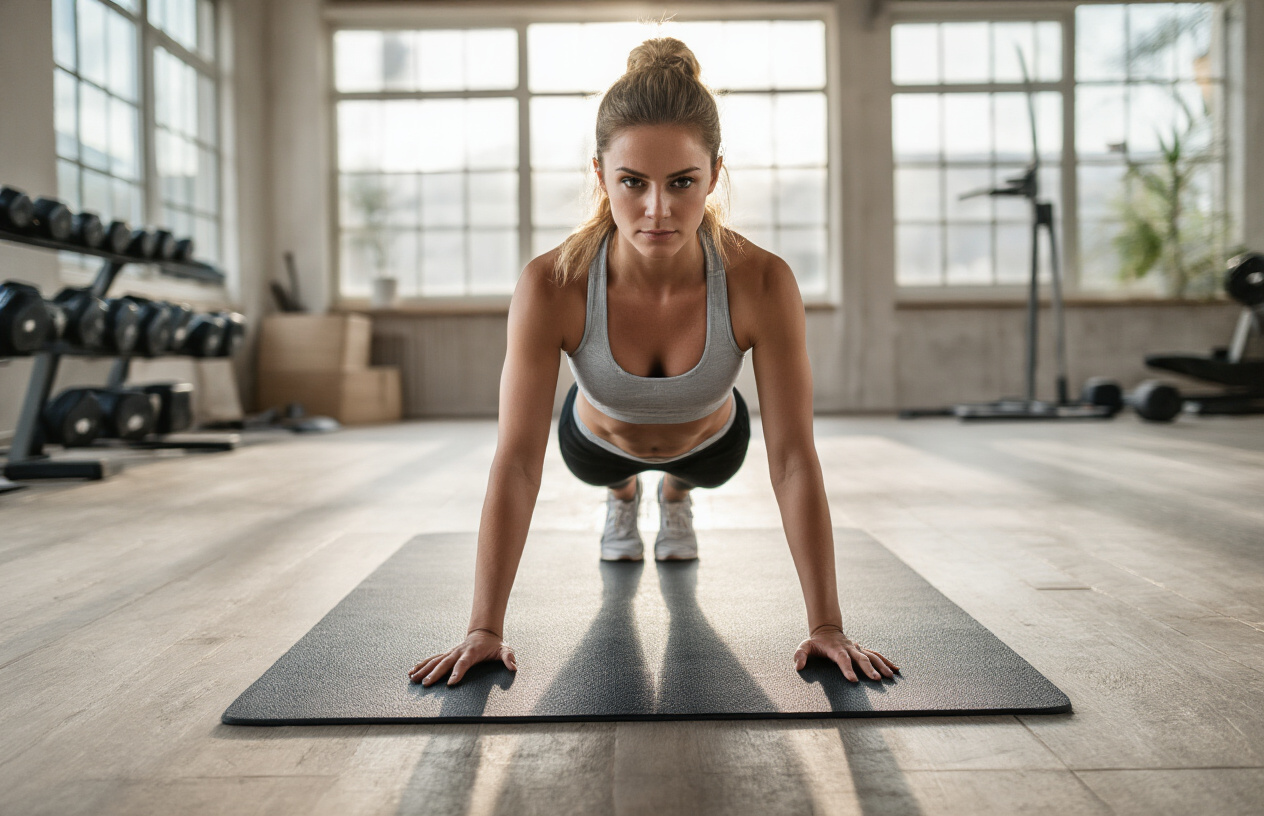
Why Consistency Matters More Than Quick Fixes
Now that we have covered the essential exercises and techniques, it’s crucial to understand that consistency and exercising safely are more important than seeking quick fixes for core muscle development. Many fitness enthusiasts fall into the trap of looking for overnight solutions or extreme workout routines that promise rapid results. However, the reality of building a strong, functional core lies in the commitment to regular, sustained practice.
The human body responds to progressive, consistent stimulation rather than sporadic intense efforts. When you maintain a regular core training schedule, your muscles adapt gradually, building both strength and endurance in a sustainable manner. This approach not only reduces the risk of injury but also ensures that the gains you make are lasting and functional.
Quick fixes often lead to disappointment and potential injury because they typically involve excessive intensity without proper progression. By prioritizing consistency over shortcuts, you create a foundation for long-term success that extends beyond mere aesthetic improvements to genuine functional strength.
Supporting Nutrition and Recovery for Muscle Development
Previously, I’ve emphasized the importance of proper exercise form and progression, but regular exercise alone isn’t sufficient for optimal core muscle development. Adequate rest and a healthy, nutritious diet are equally crucial components of your training success.
Recovery periods allow your core muscles to repair and strengthen after workouts. Without sufficient rest, your muscles cannot adapt and grow stronger, potentially leading to overtraining and decreased performance. Quality sleep plays a particularly vital role in muscle recovery, as this is when your body releases growth hormones and repairs tissue damage from exercise.
Nutritionally, your core muscles require proper fuel to function and develop. A balanced diet rich in protein supports muscle repair and growth, while complex carbohydrates provide the energy needed for intense training sessions. Essential nutrients like vitamins and minerals facilitate the biochemical processes involved in muscle development and recovery.
Hydration also plays a critical role, as proper fluid balance ensures optimal muscle function and helps transport nutrients to working muscles while removing metabolic waste products.
Understanding Realistic Expectations for Core Strengthening
With this in mind, it’s essential to establish realistic expectations about what core strengthening can and cannot achieve. The term “tone” often refers to losing body fat and increasing muscle strength in a specific area, but this concept requires careful clarification.
While targeted core exercises effectively build muscle strength and endurance in your abdominal and surrounding muscles, they cannot achieve localized fat loss on their own. The visible definition that many people associate with a “toned” core actually requires two distinct processes: increasing muscle mass through targeted exercises and reducing overall body fat through a combination of diet and exercise.
There is no way to target fat loss to a specific location through exercise alone. Your body loses fat systematically based on genetics, hormones, and overall energy balance. This means that while your core exercises will strengthen and build the underlying muscles, the visibility of these muscles depends largely on your overall body fat percentage.
Understanding this distinction helps set appropriate expectations and prevents frustration when spot-reduction doesn’t occur as expected. Focus on building genuine core strength and overall fitness rather than pursuing unrealistic aesthetic goals through exercise alone.
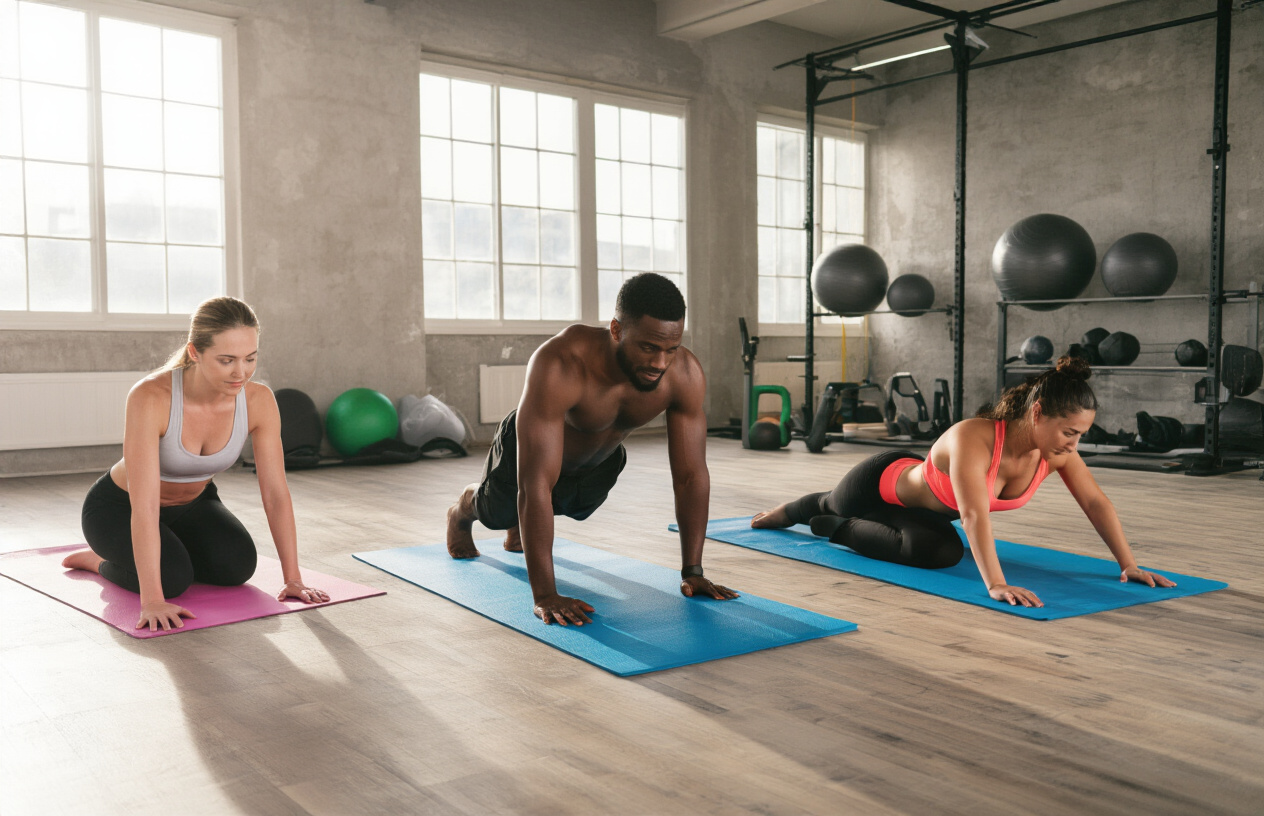
Building a strong core extends far beyond achieving visible abs—it’s about creating a foundation that supports every movement in your daily life. From understanding the complete anatomy of your core muscles to mastering exercises at every skill level, this comprehensive approach ensures you develop true functional strength. Remember that proper form and safety guidelines aren’t optional; they’re essential for maximizing results while preventing injury.
Whether you’re just starting with basic bridges and crunches or challenging yourself with advanced Turkish get-ups, consistency is your greatest ally. Talk with your healthcare professional before beginning any new exercise routine, especially if you have a history of back problems. Consider working with a certified personal trainer who can guide you through proper technique and help you progress safely through beginner, intermediate, and advanced movements. Your core is the powerhouse that stabilizes your entire body—invest in it wisely, and it will support you in everything you do.






